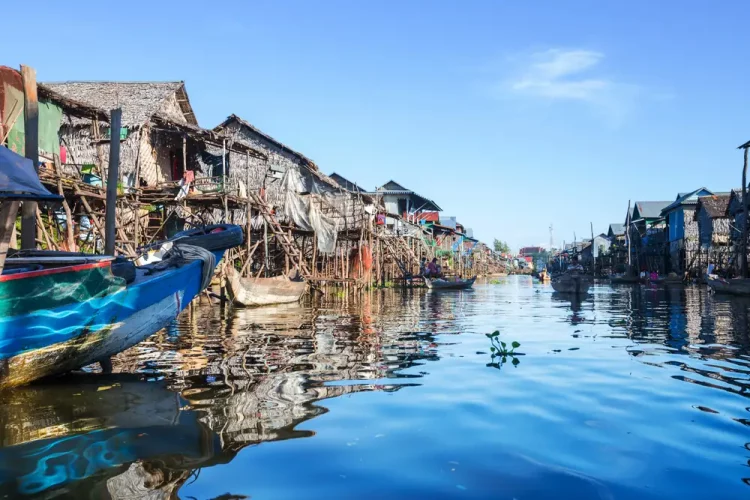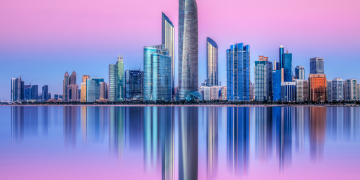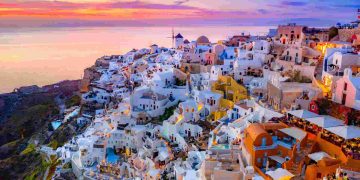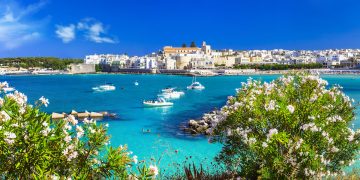Southeast Asia’s charm lies not just in its bustling cities or ancient temples, but in the serenity and simplicity of its water-based communities. In Cambodia and Vietnam, the floating villages and river cultures provide an entirely different travel experience—one that immerses visitors in a way of life that revolves around water, where families live and work on the water, and the environment shapes daily routines. The floating villages of Cambodia and the Mekong Delta of Vietnam are two such exceptional destinations that offer travelers the opportunity to witness these unique cultures in a truly intimate setting.
These areas showcase the beauty of Southeast Asia’s rural life while offering a window into how communities have adapted to live harmoniously with the waterways. Whether it’s the floating homes of Tonle Sap Lake or the bustling markets of the Mekong River, both offer an unforgettable way to experience local life. Let’s delve into the rich history, unique cultural aspects, and travel tips for visiting these extraordinary destinations.
Exploring the Unique Ways of Life in Cambodia’s Floating Villages and Vietnam’s Mekong Delta
Water is more than just a physical element in Cambodia and Vietnam—it is the lifeblood of their culture, history, and livelihoods. Cambodia’s floating villages on Tonle Sap Lake and Vietnam’s Mekong Delta offer profound insights into how water has shaped the lives of those who live by it. From sustainable fishing practices to floating markets and houses that can rise and fall with the water levels, these places provide a rare glimpse into a way of life that remains largely untouched by modern development.
While many parts of Southeast Asia have embraced modernization, these floating communities have maintained their traditional ways of living, where every aspect of daily life is intertwined with the water around them. Visiting these regions allows travelers to connect with the rhythm of the river and gain a deeper understanding of local customs, which are intrinsically tied to the ebb and flow of the river systems.
Cambodia’s Floating Villages: The History and Charm of Floating Communities
Cambodia’s floating villages on Tonle Sap Lake are a remarkable testament to human resilience and ingenuity. Tonle Sap, Southeast Asia’s largest freshwater lake, is a unique environment that sees dramatic changes in water levels between the wet and dry seasons. During the wet season, the lake expands significantly, covering vast areas of land, while during the dry season, the water retreats, leaving much of the land exposed.
For the people who live here, the fluctuation in water levels is not just a challenge—it’s a way of life. Floating villages like Kampong Phluk, Kampong Khleang, and Chong Kneas are home to thousands of people who have adapted their lives to the rhythms of the lake. Homes, schools, shops, and even entire communities are built on stilts or floating platforms, allowing them to rise and fall with the changing water levels. Boats serve as the primary mode of transportation, and daily life revolves around fishing, farming, and navigating the lake’s waterways.
The history of these villages dates back centuries, with families passing down their way of life through generations. The floating communities of Tonle Sap maintain a close-knit, communal atmosphere. The sight of wooden boats carrying families to school, market, or church against the backdrop of tranquil waters is a poignant representation of life on the lake. Visitors can explore the villages by boat, witnessing the houses on stilts and floating markets, and even observe local fishermen who still use traditional methods to catch fish.
The charm of these villages lies in their simplicity and connection to nature. The people of Tonle Sap rely on sustainable fishing practices and seasonal harvesting of water plants and fruits, giving them a sense of autonomy that few places in the world can offer. The tranquil surroundings and authentic lifestyle are a stark contrast to the noise and crowds of urban life.
Mekong Delta’s River Culture: Discover the Local Life Along the Mekong River, from Floating Markets to Tranquil Boat Rides
The Mekong Delta in Vietnam is another extraordinary water-based community that offers travelers a unique insight into the culture of Southeast Asia. Spanning over 15,000 square miles, the Mekong Delta is a network of rivers, canals, and islands that forms the lifeblood of southern Vietnam. The delta is home to millions of people who live and work along the waterways, relying on the river’s seasonal floods for agriculture, fishing, and transport.
What sets the Mekong Delta apart is its vibrant and ever-changing nature. The delta is often referred to as the “Rice Bowl” of Vietnam due to its rich agricultural activity, particularly rice cultivation. The region’s rivers and canals provide the primary means of transport, with long boats plying the waterways as they have for centuries.

The floating markets of the Mekong Delta are an iconic feature of the area. Cai Rang, one of the largest and most famous floating markets in Vietnam, operates at dawn, with hundreds of boats filled with fresh produce, fruits, vegetables, and local goods. The market is a bustling hub of activity, where vendors use boats to sell their wares to other boat operators, traders, and passersby. It’s a fascinating experience to witness this traditional form of commerce in action, with the river serving as both marketplace and thoroughfare.
Beyond the markets, the Mekong Delta offers a wealth of other experiences for travelers seeking a deeper connection to the river culture. Take a boat ride through the labyrinthine canals, passing by small villages, orchards, and lush landscapes. The peaceful boat rides allow visitors to see the delta at its most tranquil, with water lilies blooming, birds flying overhead, and local fishermen casting their nets.
The people of the Mekong Delta have a deep connection to their environment, and their livelihoods are still largely dependent on traditional practices. Fishing, rice farming, and coconut production are the primary sources of income for many families in the region. The Mekong Delta’s way of life is slowly changing, but for now, it remains one of the best places to experience the timeless rhythm of the river.
Top Travel Tips: How to Visit These Extraordinary Locations and Gain a Deep Cultural Understanding
Visiting Cambodia’s floating villages and Vietnam’s Mekong Delta offers a unique opportunity to witness firsthand the ways in which people have adapted to their water-based environments. However, these areas can also be challenging to navigate for first-time visitors. Here are some tips to help you make the most of your experience and gain a deeper cultural understanding:
- Travel by Boat: In both Cambodia and Vietnam, boats are the primary mode of transportation. Whether you’re exploring the floating villages of Tonle Sap or cruising along the Mekong Delta’s waterways, boat rides are an essential part of the experience. Opt for local boats to ensure an authentic journey and a chance to interact with locals.
- Respect the Local Culture: The people of these regions have maintained traditional lifestyles for generations. While tourism is increasingly common, it’s important to approach these communities with respect. Dress modestly, ask for permission before taking photos, and be mindful of the local customs.
- Visit During the Right Season: The water levels in the Tonle Sap Lake fluctuate depending on the season, so visiting during the wet season (June to October) provides a different perspective on the villages than during the dry season (November to May). Similarly, the Mekong Delta can be visited year-round, but it’s recommended to go during the dry season (December to April) for the best weather and boat travel conditions.
- Support Local Businesses: One of the best ways to give back to these communities is by supporting local businesses. Whether it’s buying handmade crafts from village markets or enjoying local dishes at family-run restaurants, your spending can make a meaningful impact on the livelihoods of the people living in these areas.
Conclusion
The floating villages of Cambodia and the Mekong Delta of Vietnam offer a truly unique and immersive travel experience. They are more than just picturesque landscapes or exotic locations; they are living examples of how communities have adapted to life on the water, building sustainable and harmonious relationships with the environment. By visiting these extraordinary places, you’ll not only witness the beauty of Southeast Asia’s river cultures but also gain a deeper appreciation for the importance of water in shaping local identities. For travelers seeking authenticity, serenity, and cultural immersion, these floating communities provide a chance to experience life from a completely different perspective.





















